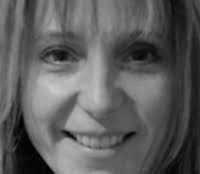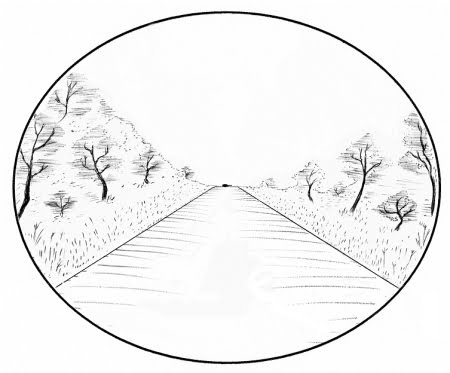Written by Adam Buick. Published for The Skeptic online on 22nd September 2010.
When the Pope visits Britain this year he will “beatify” Cardinal Newman who died in 1890. Beatification, which requires one miracle, is a step towards “canonisation” (becoming a “saint”) which requires two.
John Henry Newman was born in 1801 and became an Anglican clergyman in 1825, but in 1845 he converted to Roman Catholicism and eventually rose to become a Cardinal. He wrote two essays on miracles, one in 1826 (when he was still a Protestant), the other in 1843 (when he was well on the way to becoming a Roman Catholic). The full text of both can be found at http://www.newmanreader.org/works/miracles/index.html#contents.
The first essay expressed the orthodox Anglican/Protestant view on miracles: that the only true miracles are those described in the Bible (and that they are to be accepted as really having happened only because the Bible is the revealed word of God). This position implies that all miracles claimed outside the Bible and any since the first century of the Christian era – as by pagans, the Catholic Church and the Koran – are not miracles and that natural, non-miraculous explanations for them can be found.
In the extract below from the first essay Newman lists what these other causes might be . As will be seen, they are still pertinent and applicable and are in fact applied by sceptics faced with alleged “supernatural” happenings.
The Apollonius he mentioned was a first century Pythagorean holy man who performed the same sort of miracles as the Bible attributes to Jesus. Abbé Paris was a Jansenist (a mainly French Catholic sect) who died in 1727 at the site of whose tomb for some years after miracle cures were said to have occurred.
It is interesting to note that Newman says that the annual liquefaction of the supposed blood of St. Janarius in Naples will have a natural explanation and also that he dismisses as particularly not credible alleged miracles involving prayers and cures (precisely the type of miracle the Catholic Church says he has now got God to work and virtually the only type of miracle it accepts these days).
Adam Buick
Essay on the Miracles of Scripture (extract)
A Miracle, then, as far as it is an evidence of Divine interposition, being an ascertained anomaly in an established system, or an event without assignable physical cause, those facts, of course, have no title to the name—
1. Which may be referred to misstatements in the testimony
1. Such are many of the prodigies of the Heathen Mythology and History, which have been satisfactorily traced to an exaggeration of natural events. For instance, the fables of the Cyclops, Centaurs, of the annual transformation of a Scythian nation into wolves, as related by Herodotus, etc. Or natural facts allegorized, as in the fable of Scylla and Charybdis. Or where the fact may be explained by supplying a probable omission; as we should account for a story of a man sailing in the air by supposing a balloon described.
2. Or where the Miracle is but verbal, as the poetical prodigy of thunder without clouds, which is little better than a play upon words; for, supposing it to occur, it would not be called thunder. Or as when Herodotus speaks of wool growing on trees; for, even were it in substance the same as wool, it could not be called so without a contradiction in terms.
3. Or where the Miracle is one simply of degree, for then exaggeration is more easily conceivable;—thus many supposed visions may have been but natural dreams.
4. Or where it depends on the combination of a multitude of distinct circumstances, each of which is necessary for the proof of its supernatural character, and where, as in fine experiments, a small mistake is of vast consequence. As those which depend on a coincidence of time, which it is difficult for any person to have ascertained. For instance, the exclamation which Apollonius is said to have uttered concerning the assassination of Domitian at the time of its taking place; and, again, the alleged fact of his appearing at Puteoli on the same morning in which he was tried at Rome. Such, too, in some degree, is the professed revelation made to St. Basil, who is said to have been miraculously informed of the death of the Emperor Julian at the very moment that it took place. Here we may instance many stories of apparitions; as the popular one concerning the appearance of a man to the club which he used to frequent at the moment after his death, who was afterwards discovered to have escaped from his nurses in a fit of delirium shortly before it took place, and actually to have joined his friends. We may add the case related to M. Bonnet, of a woman who pretended to know what was passing at a given time at any part of the globe, and who was detected by the simple expedient of accurately marking the time, and comparing her account with the fact. In the same class must be reckoned not a few of the answers of the Heathen Oracles, if it be worth while to allude to them; as that which informed Crœsus of his occupation at a certain time agreed upon. In the Gospel, the nobleman’s son begins to amend at the very time that Christ speaks the word; but this circumstance does not constitute, it merely increases the Miracle. The argument from Prophecy is, in this point of view, somewhat deficient in simplicity and clearness, as implying the decision of many previous questions: such, for instance, as to the existence of the professed prediction before the event, the interval between the prediction and its accomplishment, the completeness of its accomplishment, etc. Hence Prophecy affords a more learned and less popular proof of Divine interposition than physical Miracles, and, except in cases where it contributes a very strong evidence, is commonly of inferior cogency.
2. Those which, from suspicious circumstances attending them, may not unfairly be referred to an unknown cause
1. As those which take place in departments of nature little understood; for instance, Miracles of Electricity.—Again, an assemblage of Miracles confined to one line of extraordinary exertion in some measure suggests the idea of a cause short of divine. For while their repetition looks like the profession, their similarity argues a want, of power. This remark is disadvantageous to the Miracles of the primitive Church, which consisted almost entirely of exorcisms and cures; to the Pythagorean, which were principally Miracles of sagacity; and, again, to those occurring at the tomb of the Abbé Paris, which were limited to cures, and cures, too, of particular diseases. While the Miracles of Scripture are frugally dispensed as regards their object and seasons, they are carefully varied in their nature; like the work of One who is not wasteful of His riches, yet can be munificent when occasion calls for it.
2. Here we may notice tentative Miracles, as Paley terms them; that is, where out of many trials only some succeed; for inequality of success seems to imply accident, in other words, the combination of unknown physical causes. Such are the cures of scrofula by the King’s touch, and those effected in the Heathen Temples; and, again, those at the tomb of the Abbé Paris, there being but eight or nine well-authenticated cures out of the multitude of trials that were made. One of the peculiarities of the cures ascribed to Christ is their invariable success.
3. Here, for a second reason, diffidence in the agent casts suspicion on the reality of professed Miracles; for at least we have the sanction of his own opinion for supposing them to be the effect of accident or unknown causes.
4. Temporary Miracles also, as many of the Jansenist and other extraordinary cures, may be similarly accounted for; for, if ordinary causes can undo, it is not improbable they may be able originally to effect. The restoration of Lazarus and the others was a restoration to their former condition, which was mortal; their subsequent dissolution, then, in the course of nature, does not interfere with the completeness of the previous Miracle.
5. The Jansenist cures are also unsatisfactory, as being gradual, and, for the same reason, the professed liquefaction of St. Januarius’s blood; a progressive effect being a characteristic, as it seems, of the operations of nature. Hence those Miracles are most perspicuous which are wrought at the word of command; as those of Christ and His Apostles. For this as well as other reasons, incomplete Miracles, as imperfect cures, are no evidence of supernatural agency; and here, again, we have to instance the cures effected at the tomb of the Abbé Paris.
6. Again, the use of means is suspicious; for a Miracle may almost be defined to be an event without means. Hence, however miraculous the production of ice might appear to the Siamese, considered abstractedly, they would hardly so account it in an actual experiment, when they saw the preparation of nitre, etc., which in that climate must have been used for the purpose. In the case of the Steam-vessel or the Balloon, which, it has been sometimes said, would appear miraculous to persons unacquainted with Science, the chemical and mechanical apparatus employed could not fail to rouse suspicion in intelligent minds. Hence professed Miracles are open to suspicion, if confined to one spot; as were the Jansenist cures. For they thereby became connected with a necessary condition, which is all we understand by a means: for instance, such may often be imputed to a confederacy, which (as is evident) can from its nature seldom shift the scene of action. “The Cock-lane ghost could only knock and scratch in one place.” The Apostles, on the contrary, are represented as dispersed about, and working Miracles in various parts of the world. These remarks are, of course, inapplicable in a case where the apparent means are known to be inadequate, and are not constantly used; as our Lord’s occasional application of clay to the eyes, which, while it proves that He did not need such instrumentality, conveys also an intimation that all the efficacy of means is derived from His appointment.
3. Those which may be referred to the supposed operation of a cause known to exist
1. Professed Miracles of knowledge or mental ability are often unsatisfactory for this reason; being in many cases referable to the ordinary powers of the intellect. Of this kind is the boasted elegance of the style of the Koran, alleged by Mahomet in evidence of his divine mission. Hence most of the Miracles of Apollonius, consisting, as they do, in knowing the thoughts of others, and predicting the common events of life, are no criterion of a supernatural gift; it being only under certain circumstances that such power can clearly be discriminated from the natural exercise of acuteness and sagacity. Accordingly, though a knowledge of the hearts of men is claimed by Christ, it seems to be claimed rather with a view to prove to Christians the doctrine of His Divine Nature than to attest to the world His authority as a messenger from God. Again, St. Paul’s prediction of shipwreck on his voyage to Rome was intended to prevent it; and so was the prediction of Agabus concerning the same Apostle’s approaching perils at Jerusalem
2. For a second reason, then, the argument from Prophecy is a less simple and striking proof of divine agency than a display of Miracles; it being impossible, in all cases, to show that the things foretold were certainly beyond the ordinary faculties of the mind to have discovered. Yet when this is shown, Prophecy is one of the most powerful of conceivable evidences; strict foreknowledge being a faculty not only above the powers, but even above the comprehension of the human mind.
3. And much more fairly may apparent Miracles be attributed to the supposed operation of an existing physical cause, when they are parallel to its known effects; as chemical, meteorological, etc., phenomena. For though the cause may not, perhaps, appear in the particular case, yet it is known to have acted in others similar to it. For this reason, no stress can be laid on accounts of luminous crosses in the air, human shadows in the clouds, appearances of men and horses on hills, and spectres when they are speechless, as is commonly the case, ordinary causes being assignable in all of these; or, again, on the pretended liquefaction of the blood of St. Januarius, or on the exorcism of demoniacs, which is the most frequent Miracle in the Primitive Church.
4. The remark applies, moreover, to cases of healing, so far as they are not instantaneous, complete, etc.: conditions which exclude the supposition of natural means being employed, and which are strictly fulfilled in the Gospel narrative.
5. Again, some cures are known as possible effects of an excited imagination; particularly when the disease arises from obstruction and other disorders of the blood and spirits, as the cures which took place at the tomb of the Abbé Paris.
6. We should be required to add those cases of healing in Scripture where the faith of the petitioners was a necessary condition of the cure, were not these comparatively few, and some of them such as no imagination could have effected (for instance, the restoration of sight), and some wrought on persons absent; and were not faith often required, not of the patient, but of the relative or friend who brought him to be healed.
7. The force of imagination may also be alleged to account for the supposed visions and voices which some enthusiasts have believed they saw and heard; for instance, the trances of Montanus and his followers, the visions related by some of the Fathers, and those of the Romish saints; lastly, Mahomet’s pretended night-journey to heaven: all which, granting the sincerity of the reporters, may not unreasonably be referred to the effects of disease or of an excited imagination.
8. Such, it is obvious, might be some of the Scripture Miracles; for instance, the various appearances of Angels to individuals, the vision of St. Paul when he was transported to the third heaven, etc., which accordingly were wrought, as Scripture professes, for purposes distinct from that of evidencing the doctrine, viz., in order to become the medium of a revelation, or to confirm faith, etc. In other cases, however, the supposition of imagination is excluded by the vision having been witnessed by more than one person, as the Transfiguration; or by its correspondence with distinct visions seen by others, as in the circumstances which attended the conversion of Cornelius; or by its connection with a permanent Miracle, as the appearance of Christ to St. Paul in his conversion, is connected with his blindness in consequence, which remained three days.
9. Much more inconclusive are those which are actually attended by a physical cause known or suspected to be adequate to their production. Some of those who were cured at the tomb of the Abbé Paris were at the time making use of the usual remedies; the person whose inflamed eye was relieved was, during his attendance at the sepulchre, under the care of an eminent oculist; another was cured of a lameness in the knee by the mere effort to kneel at the tomb. Arnobius challenges the Heathens to produce one of the pretended miracles of their gods performed without the application of some prescription.
10. Again, Hilarion’s cures of wounds, as mentioned by Jerome, were accompanied by the application of consecrated oil. The Apostles indeed made use of oil in some of their cures, but they more frequently healed without a medium of any kind. A similar objection might be urged against the narrative of Hezekiah’s recovery from sickness, both on account of the application of the figs, and the slowness of the cure, were it anywhere stated to have been miraculous. Again, the dividing of the Red Sea, accompanied as it was by a strong east wind, would not have been clearly miraculous, had it not been effected at the word of Moses.
11. Much suspicion, too, is (as some think) cast upon the miraculous nature of the fire, etc., which put a stop to Julian’s attempt to rebuild the Temple at Jerusalem, by the possibility of referring it to the operation of chemical causes.
12. Lastly, answers to prayer, however providential, are not miraculous; for in granting them, God acts by means of, not out of, His usual system, making the ordinary course of things subservient to a gracious purpose. Such events, then, instead of evidencing the Divine approbation to a certain cause, must be proved from the goodness of the cause to be what they are interpreted to be. Yet by supposed answers to prayer, appeals to Heaven, pretended judgments, etc., enthusiasts in most ages have wished to sanction their claims to divine inspiration. By similar means the pretensions of the Romish hierarchy have been supported.
Adam Buick is a retired European civil servant and a member of the Comité Belge pour l’Investigation Scientifique des Phénomènes réputés Paranormaux (www.comitepara.be)











